Indulge in homemade croissants with my easy step-by-step recipe. Learn why laminated butter, cold dough, and proper folding techniques create the perfect flaky, buttery pastry. Ideal for weekend brunches!
Living on a farmstead, where we raise our protein and organic eggs, breakfast is homemade daily and part of our daily routine of feeding a family of 8. With fresh eggs, bacon, sausage, homemade jam, and more, weekend brunches are a tradition in our home. One of our favorite indulgent treats for these weekend mornings is homemade croissants. These beautiful, flaky, buttery pastries are delicious no matter what you part them with.
The Irresistible Taste of Homemade Croissants.
There's nothing quite like the taste of a freshly baked croissant. The outer layer is golden and crisp, the inside is light, airy, and buttery. Each bite offers a perfect balance of texture and flavor, with the rich taste of butter melding with the dough's lightness. Homemade croissants are far superior to store-bought versions, which often need more freshness and quality.
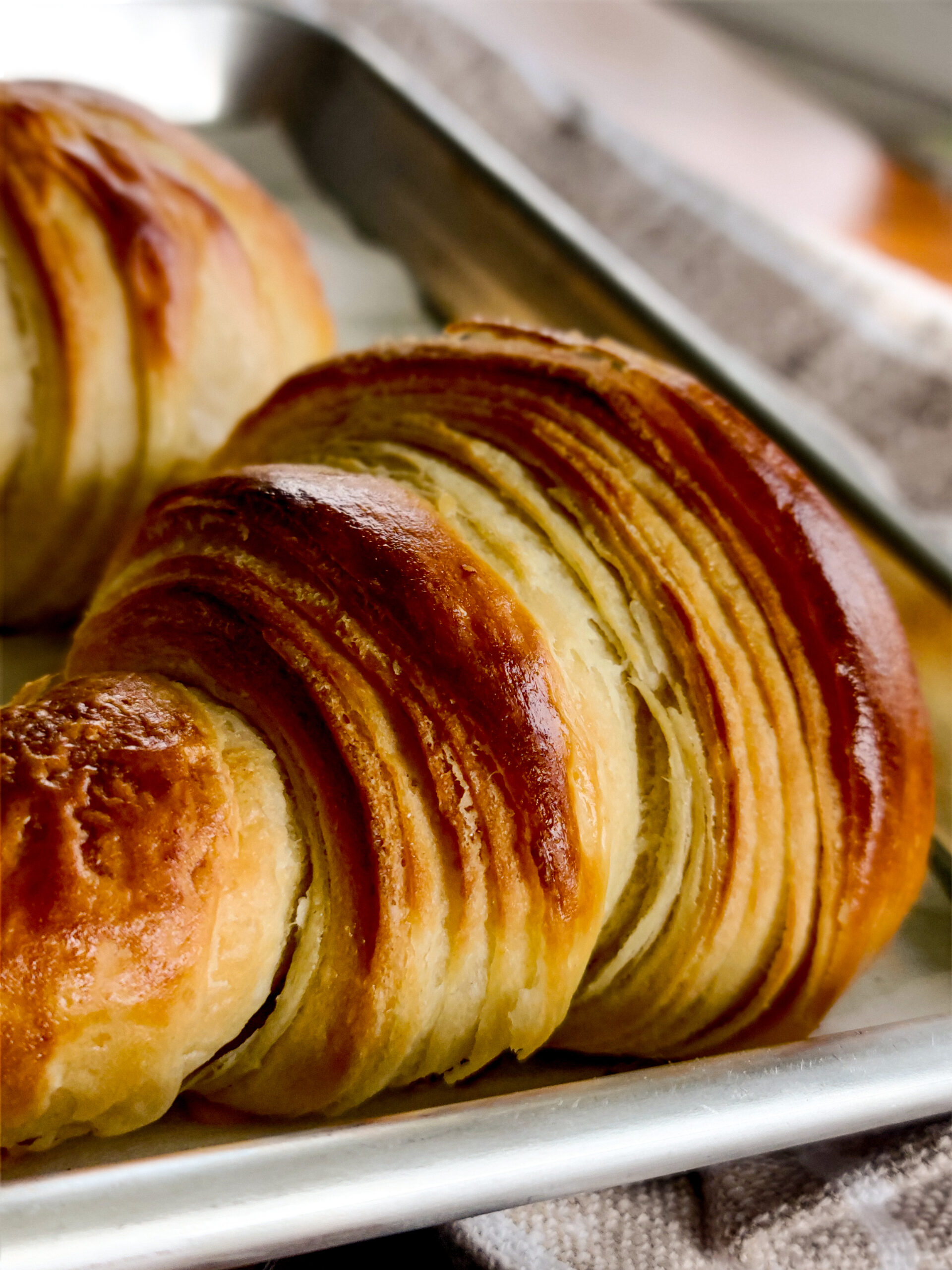
Key Ingredients and Techniques:
- Laminated Butter: High-quality butter is essential in croissant-making. Laminated butter, incorporated into the dough through layering and folding, creates the signature flaky texture. Using unsalted butter allows you to control the amount of salt in the dough, resulting in a perfectly balanced flavor. This step enhances the buttery taste and contributes to the croissant's delightful flakiness.
- Cold Dough: The dough's temperature is a critical aspect of the croissant-making process. Cold dough is essential to ensure the butter remains in distinct layers and doesn't melt into the dough. This separation is what creates the flaky layers in the final pastry. Working with chilled dough makes it easier to handle, preventing it from becoming sticky and difficult to roll out. Refrigerate the dough between each folding step to maintain the right temperature.
- Laminating the Dough: This is a technique that involves rolling out the dough, layering it with butter, and then folding it multiple times. This creates numerous thin layers of dough, resulting in its characteristic flaky texture. Typically, the dough is folded in thirds, similar to folding a letter, and this process is repeated several times with resting periods in between. Each fold multiplies the layers, contributing to the pastry's light and airy structure.
Step-by-Step Recipe in My Everyday Bread Recipe Ebook.
My step-by-step recipe is available in my Everyday Bread Recipes Vol. 2 for those eager to try making homemade croissants. The detailed instructions guide you through each process stage, from preparing the dough to laminating the butter and achieving the perfect bake. With patience and practice, you can create croissants that rival those from the supermarket.
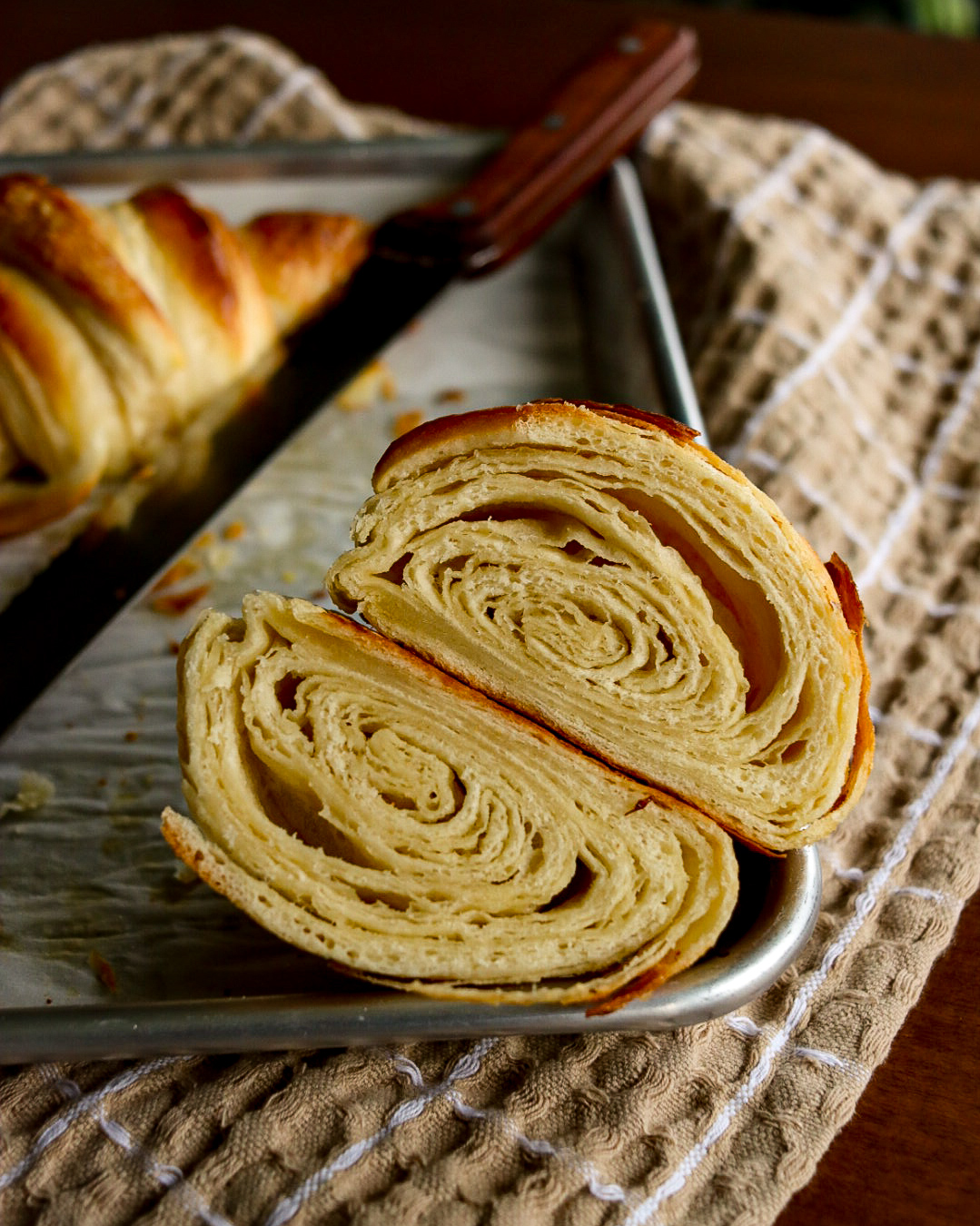
Why Make Croissants at Home?
Superior Taste and Quality: Homemade croissants have a depth of flavor and freshness that store-bought versions can't match. The use of high-quality ingredients and the careful attention to technique ensure that each croissant is a masterpiece.
Customizable: You can add fillings like chocolate, almond paste, or ham and cheese for a delightful twist on the classic pastry.
Homemade croissants are a delicious treat that elevates any breakfast or brunch. The combination of flaky layers, buttery richness, and the satisfaction of creating something from scratch makes them worthwhile.
In my Everyday Bread Recipes Vol. 2, you can master the art of croissant-making and enjoy these delectable pastries fresh from your oven.

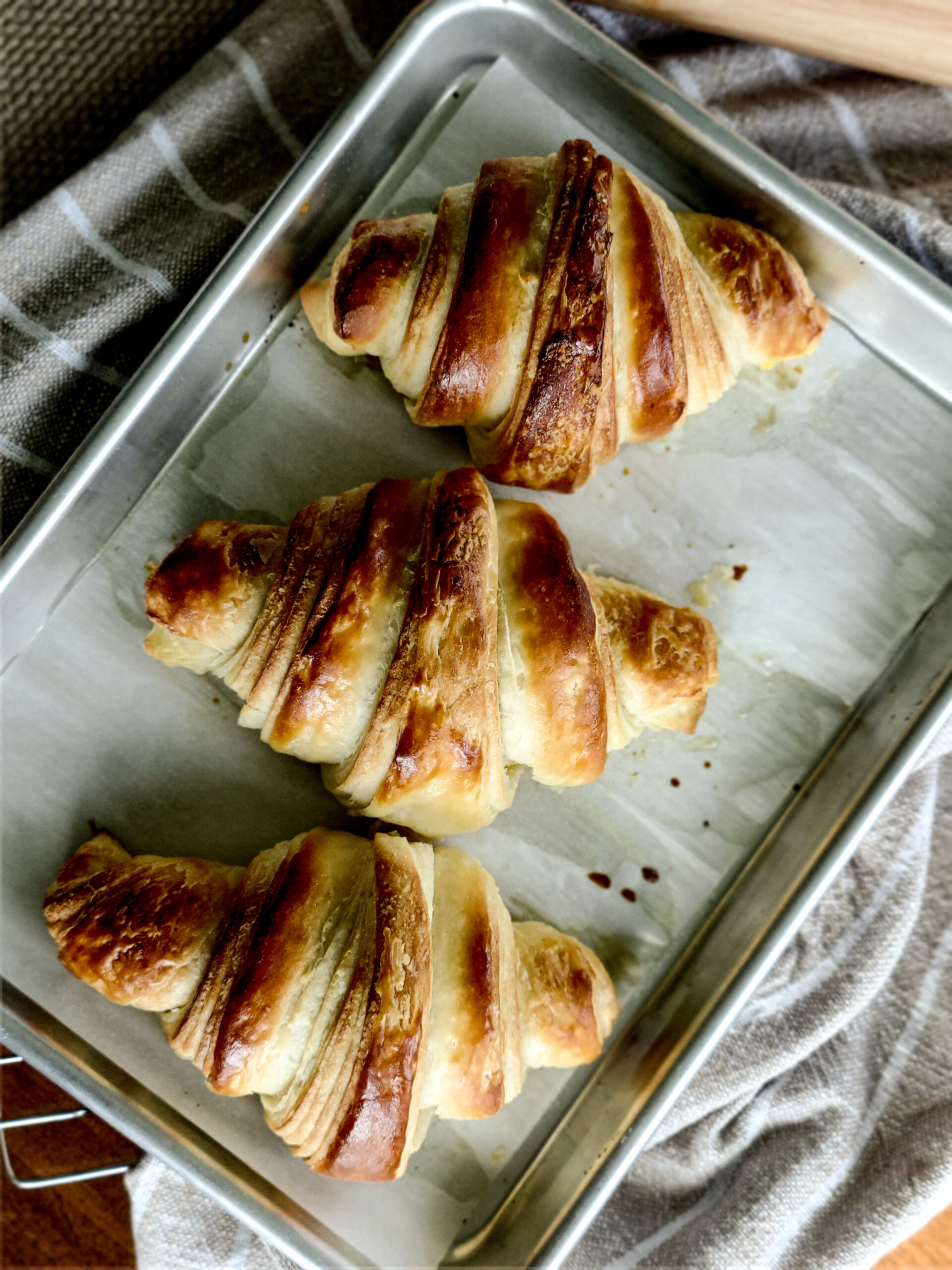

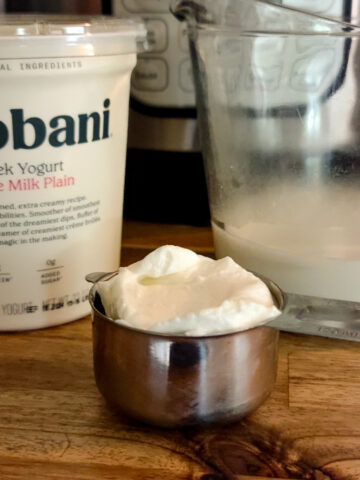
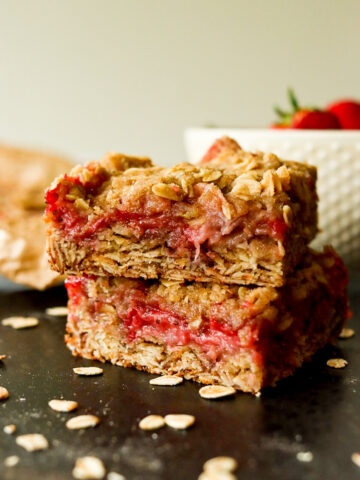

Laura Meier says
Do you have a video showing how to make the croissants? I purchased your cook book. I just still have questions about making the dough.
tinyfarmbigfamily says
I do! On Instagram @tinyfarmbigfamily hope this helps.
Roxanne Walsh says
Your croissants look unbelievable! I am going to try my best to make these.